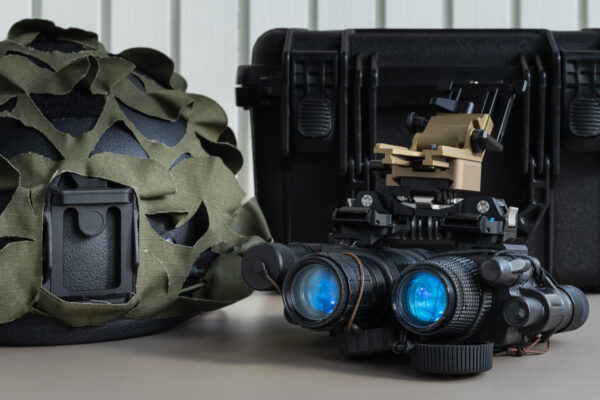Nabaltec posted record revenues in H118 despite the US facility being out of operation. A shift to high-margin products partly offset the negative impact of the factory closure. Commissioning of the expanded facility commenced in August, with production ramping up the rest of the year.
Record revenues and double-digit margins in H118
H118 revenues rose by 3.5% year-on-year to a record €91.8m. Revenues from the Functional Fillers product segment increased by only 0.5% to €60.0m because of capacity constraints while the US operation is out of action. The very modest growth reflected a shift in product mix to include greater volumes of high-margin boehmite used in lithium-ion batteries. Revenues from the Specialty Alumina segment grew by 10.0% to €31.8m, also from a shift to higher-margin products. EBIT margin reduced by 0.6bp to 10.7% as higher boehmite volumes and positive currency tempered the negative impact of the US operation being closed and higher freight costs. Group EBIT was flat at €9.7m. EPS fell by 23.7% to €0.58 as a result of the dilution caused by the September 2017 placing. Net debt rose by €2.3m to €28.2m and gearing by 1.0pp to 31.6%.
FY18 margins depressed by Nashtec ramp-up
Management has reiterated its guidance of mid-single digit revenue growth and high single-digit EBIT margin for FY18, noting the dampening effect on margin as US production ramps up during H218. By FY19, the start-up inefficiencies should have worked through, so the benefit of releasing capacity in Germany to rising EU demand driven by tighter safety standards should be seen in profit growth. In July management purchased a site for manufacturing refined hydroxides in the US. It estimates that this plant will commence production in mid-FY19 and make a positive contribution to earnings a year after that.
Valuation: Trading at a discount to peers
The share price has fallen back from the peak of €31.10 achieved in mid-January, possibly reflecting investor concerns about the level of drag that ramping up production at Nashtec may have on FY18 profits and the delay in re-opening the facility. The shares are currently trading on prospective multiples that are at a discount to the mean of the peer group. This indicates potential for share price appreciation once the ramp-up in production at Nashtec is complete and there is greater clarity about the impact that the proposed US facility for refined hydroxides will have on margins.
Year
end |
Revenue
(€m) |
PBT
(€m) |
EPS
(€) |
DPS
(€) |
P/E
(x) |
Yield
(%) |
12/16 |
159.2 |
9.2 |
0.67 |
0.15 |
36.4 |
0.6 |
12/17 |
168.6 |
15.7 |
1.39 |
0.18 |
17.6 |
0.7 |
12/18e |
181.0 |
14.7 |
1.19 |
0.19 |
20.5 |
0.8 |
12/19e |
196.5 |
16.8 |
1.32 |
0.21 |
18.5 |
0.9 |
|
H118 revenues at record levels
H118 revenues rose by 3.5% year-on-year to a record €91.8m. Following the temporary closure of Nashtec in August 2016, customers in the US have been supplied from Nabaltec’s plant in Schwandorf, Germany, which operated at peak capacity throughout the period. This meant Nabaltec was not able to increase capacity further in response to rising demand for fine hydroxides in Europe. Revenues from the Functional Fillers product segment therefore increased by only 0.5% to €60.0m in H118. The very modest growth is attributable to a shift in product mix to include greater volumes of boehmite, which commands a higher than average gross margin. Revenues from the Specialty Alumina segment grew by 10.0% to €31.8m, also related to a shift to higher-margin products. Around half of Nabaltec’s Specialty Alumina output is used in longer-lasting refractories, supporting efficient steel production. Requirements for this application benefited from a buoyant global steel industry. Exports accounted for 73.8% of total sales, which was a similar level to H117 (73.5%).
The cost of materials as a percentage of revenues increased by 0.8pp to 48.2% as it has not yet been appropriate to push through higher prices to reflect rising raw materials costs given the uplift in fine hydroxide prices that was achieved in FY17. Although personnel expenses increased by €1.0m to €16.8m, this was the result of moving US staff who had previously been treated as consultants working for the JV onto the payroll. Other operating expenses increased by €0.9m to €16.5m, because of higher freight costs and charges for repairs. Group EBIT was flat at €9.7m. Operating margin, which declined by 0.6pp to 10.7%, was also adversely affected by the provision to cover the cost of the Nashtec closure (we note that the operation was closed throughout H117 as well) being fully utilised by the end of March, and commissioning did not start until August rather than April as originally planned. EPS fell by 23.7% to €0.58, reflecting the dilutive impact of the placing in September 2017.
Net debt rose by €2.3m to €28.2m and gearing by a very modest 1.0pp to 31.6%. Cash generated from operations (€13.4m) was €1.4m lower than the prior year period as more favourable movements in working capital were offset by higher taxes. Overall, €13.4m cash was consumed in capital expenditure, primarily in retrofitting and expanding capacity at Nashtec from 22,000 tonnes per year to 30,000 tonnes per year, and optimising production processes at the German site.
Additional capacity underpins future growth
Expansion of capacity in the US
Until August 2016, Nabaltec’s US customers were supplied from Texas-based Nashtec, a JV with Sherwin Alumina in which Nabaltec held a 51% stake. Sherwin Alumina provided Nashtec with raw materials, but this source stopped in August 2016 when Sherwin entered Chapter 11 bankruptcy. The plant was temporarily closed and Nabaltec retained its US customer base by supplying them from its Schwandorf site. In March 2017, Nabaltec concluded discussions to acquire the outstanding 49% stake in Nashtec, and some production buildings and technical equipment on an adjacent piece of land required to operate the plant independently. It also concluded discussions regarding reinstatement of raw material supply. This enabled management to proceed with its investment programme for the site, expanding capacity and improving efficiency. Commissioning of the new production line started in August before gradually ramping up production during the remainder of H218 so American customers can start to receive fine hydroxides direct from the US again. The full 30,000 tonnes of capacity is expected to become available in FY19.
Management also plans to construct production facilities for refined hydroxides and boehmite in the US, thus opening up additional applications for flame retardants, as well as entering the e-mobility sector. The first phase will be the development of a production facility for refined hydroxides with an annual capacity of around 30,000 tonnes. This phase is expected to cost around US$12m (including land), to commence production in H219 and to have a positive impact on consolidated earnings one year after that. In July 2018, Nabaltec acquired land and buildings in Chattanooga, Tennessee for this proposed production facility (estimated cost $3m). The second phase, construction of a facility for boehmite production, will follow, assuming that demand from e-vehicles has developed sufficiently to warrant this.
At the interims in August, management reiterated its guidance for FY18 of mid-single digit revenue growth and high single-digit EBIT margin, because the inefficiencies while Nashtec ramps up production during H2 are expected to have an adverse impact on profits. Capital investment is expected to be at a similar level to FY17 (c €25-27m). This includes completion of the alterations at Nashtec, process optimisation and infrastructure at Schwandorf and purchase of the Chattanooga site.
Future revenue growth is predicated on continued demand for functional fillers for flame retardants and products targeted at emerging applications such as boehmite. Demand for non-halogenated flame retardants is growing because of tightening fire safety requirements and increasing attention on the reduction of fumes. This is of particular concern in areas where it is difficult for people to escape quickly, such as tunnels, airports and high-rise buildings, and for electronic products that may be taken onto aircraft. In July 2017, the Construction Products Regulation came into force throughout the EU. This made it mandatory for new cabling supplying electricity or being used for control or communication purposes to meet the EN 50575 standard regarding performance when subjected to fire. Nabaltec is well positioned to take advantage of this demand when full capacity at Nashtec is available in 2019.
Demand for boehmite, which is used as a separator coating in lithium-ion batteries, is growing very rapidly. Q218 sales were higher than those for H117. We expect demand for this material to continue to rise, driven by the global roll-out of electric vehicles and stationary energy storage systems. Over time, boehmite could represent an activity equal in scale to the Specialty Alumina segment.
We note the diversity of applications that use Nabaltec’s materials. Flame retardants are used in buildings, cars, aeroplanes and consumer goods. While around 45% of Specialty Alumina revenues relate to the steel industry, the remainder are deployed in applications as wide ranging as engine catalysts, polishing powders, a substitute for asbestos in brake linings, high-voltage insulators, ballistic protection and ceramics.
The share price has fallen back from the peak of €31.10 achieved in mid-January, possibly reflecting investor concerns about the level of drag that ramping up production at Nashtec may have on FY18 profits and the delay in re-opening the facility. The shares are currently trading on prospective multiples that are at a discount to the mean of the peer group. This indicates potential for share price appreciation once the ramp-up in production at Nashtec is complete and there is greater clarity about the impact that the proposed US facility for refined hydroxides will have on margins.
Exhibit 1: Multiples for European chemicals companies
Name |
Market cap (€m) |
EV/Sales 1FY (x) |
EV/Sales 2FY (x) |
EV/EBITDA 1FY (x) |
EV/EBITDA 2FY (x) |
PE 1FY
(x) |
PE 2FY
(x) |
Akzo Nobel |
20,445 |
2.5 |
2.4 |
19.9 |
16.8 |
28.0 |
23.4 |
Bodycote |
2,091 |
2.6 |
2.5 |
9.4 |
8.9 |
18.5 |
17.2 |
Croda International |
7,513 |
5.2 |
4.9 |
17.8 |
16.5 |
27.0 |
25.0 |
Elementis |
1,358 |
2.1 |
1.9 |
10.6 |
9.2 |
16.4 |
15.1 |
Evonik Industries |
14,953 |
1.2 |
1.2 |
7.0 |
7.0 |
13.0 |
12.9 |
Fuchs Petrolub |
6,636 |
2.5 |
2.4 |
14.6 |
13.5 |
22.9 |
21.2 |
Holland Colours |
74 |
0.8 |
0.7 |
6.2 |
5.8 |
11.1 |
10.1 |
Johnson Matthey |
7,636 |
0.5 |
0.5 |
10.2 |
9.5 |
15.6 |
14.2 |
Kemira OYJ |
1,740 |
0.9 |
0.9 |
7.1 |
6.6 |
15.1 |
12.8 |
Koninklijke DSM |
16,268 |
1.8 |
1.8 |
9.5 |
10.3 |
15.7 |
17.9 |
Nanogate |
186 |
1.2 |
1.1 |
10.8 |
9.2 |
82.0 |
54.7 |
ORAPI |
40 |
0.4 |
0.4 |
9.4 |
7.2 |
(23.3) |
14.4 |
Symrise |
10,068 |
3.7 |
3.5 |
18.2 |
16.5 |
33.5 |
29.6 |
Umicore |
11,511 |
0.9 |
0.8 |
16.0 |
13.5 |
32.0 |
26.7 |
Victrex |
2,958 |
7.9 |
7.7 |
17.9 |
17.7 |
23.7 |
23.5 |
Wacker Chemie |
6,303 |
1.4 |
1.3 |
6.5 |
6.2 |
17.4 |
15.7 |
Mean |
0 |
1.8 |
1.8 |
12.0 |
10.9 |
20.7 |
18.6 |
Nabaltec |
190 |
1.2 |
1.1 |
7.1 |
6.5 |
18.3 |
16.5 |
Source: Edison Investment Research. Note: Prices at 22 August 2018. Grey shading indicates exclusion from mean.














